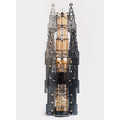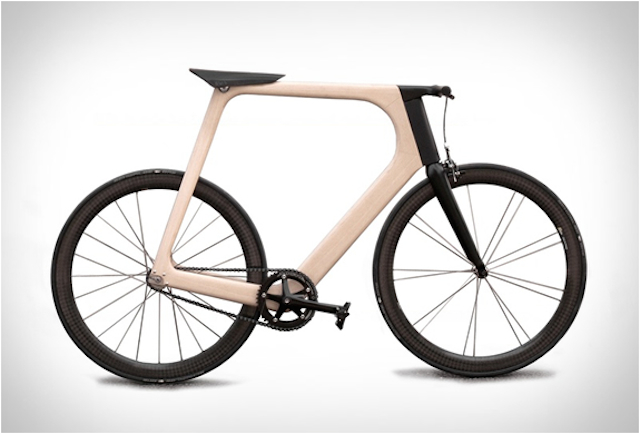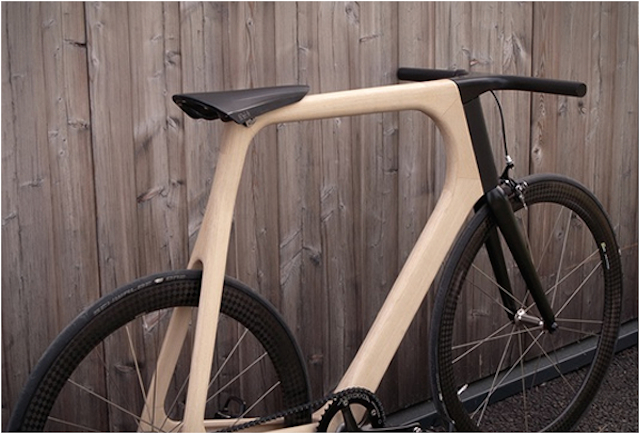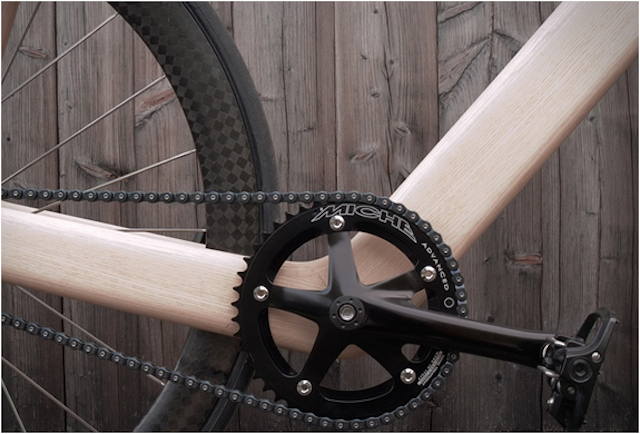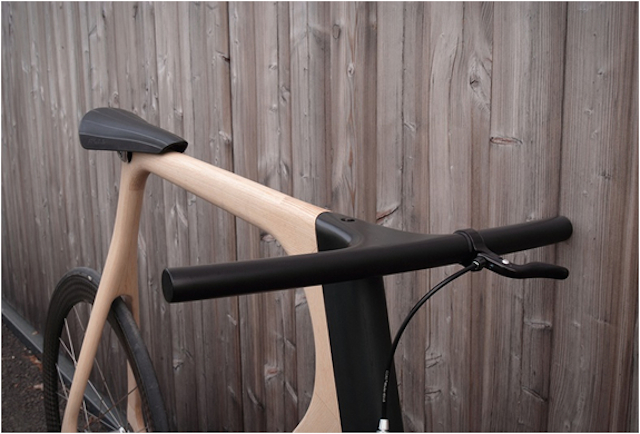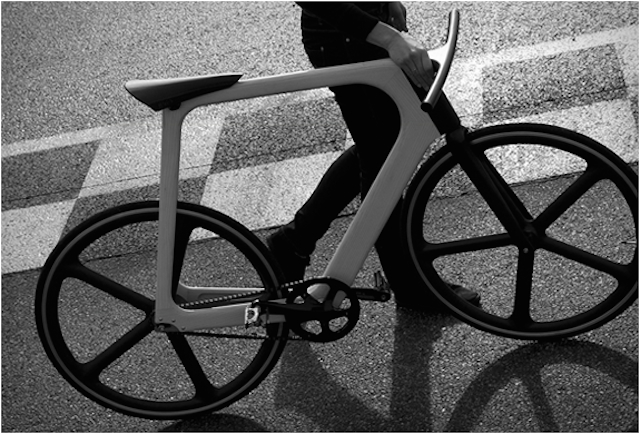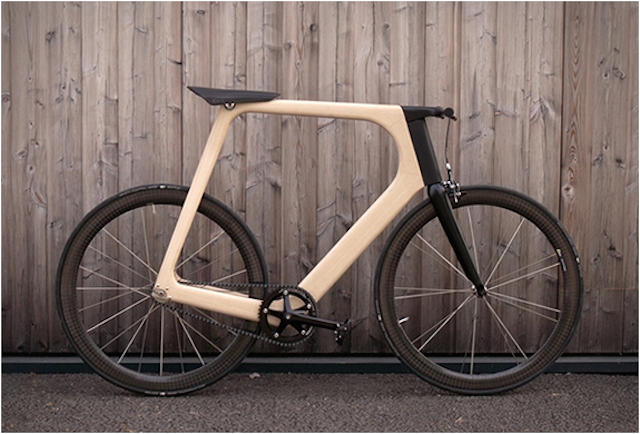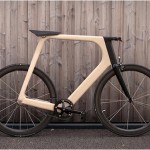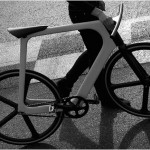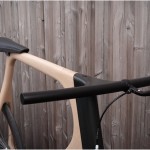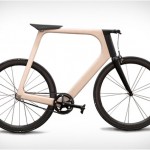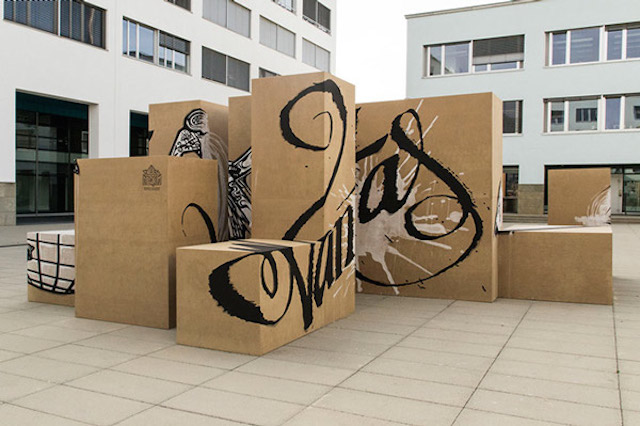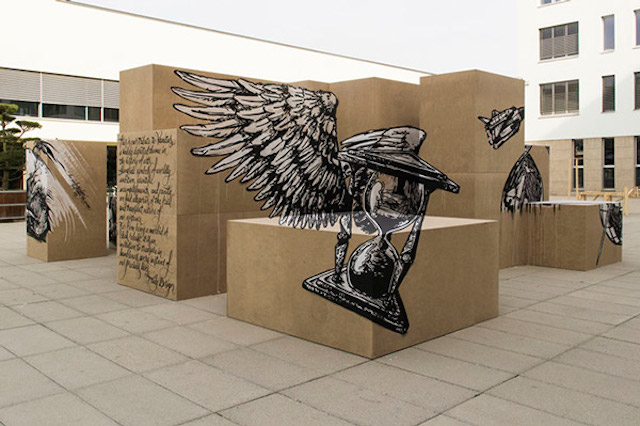Adorable Disney Decals – This Animated Sticker Adds More Charm to Your Apple Laptop (GALLERY)
Posted in: UncategorizedRisque School Girl Series – This Lui October 2014 Editorial is Seductively Coy (GALLERY)
Posted in: UncategorizedArvak Bicycle
Posted in: UncategorizedCette bicyclette nommée Arvak est une création du studio de Design français Keim. Avec la collaboration de l’atelier Breitfuss, Arvak est un vélo qui possède un cadre monocoque creux composé de 24 couches de frêne stratifié et d’une résine bio-sourcée. L’orientation des fibres de bois a même été optimisée afin de développer la qualité du matériau. À découvrir en images.
TNT launches TV campaign to humanise brand
Posted in: UncategorizedTNT, the postal service, is launching its first TV ad campaign for four years, in a bid to humanise the brand.
Facebook's Sandberg: Industry must celebrate ads that celebrate women
Posted in: UncategorizedThe “Lean In” author led an Advertising Week panel that explored gender roles in global campaigns.
'If you aren't failing, you're not trying'
Posted in: UncategorizedMiles Nadal, chairman and CEO of MDC Partners, challenged Advertising Week attendees to encourage their teams to “pursue the art of the possible.”
Sales execs size up data at Advertising Week panel
Posted in: UncategorizedData is “one of ESPN’s greatest priorities” over the next 18 months, according to Eric Johnson, the ESPN executive vice president, global multimedia sales, speaking at Advertising Week this morning.
Smirnoff Ice airs Africa campaign
Posted in: UncategorizedSmirnoff has released a TV campaign across four African countries for its Ice Double Black and Ice Double Black Guarana drinks, as part of a push in the continent by parent company Diageo.
Universal Music Group to allow native ads in videos
Posted in: UncategorizedUniversal Music Group will allow digital brand integrations in select music videos for the first time in a bid to boost revenues through advertising.
ESPN 'very surprised' by BT's bid for Premier League rights
Posted in: UncategorizedNEW YORK – ESPN was “very surprised” by BT’s knockout bid for the Premier League broadcast rights, according to Eric Johnson, the ESPN executive vice-president, global multimedia sales.
Matalan defends 'racist' monkey onesie image
Posted in: UncategorizedMatalan has denied that a catalogue image featuring children dressed up in animal onesies was racist, after customers complained that the only black children featured were wearing monkey outfits.
Consumer confidence tumbles from a nine year high
Posted in: UncategorizedBritish consumer confidence has dropped this month, falling from a nine year high according to research by GfK.
Optical Illusions With Street Art Style
Posted in: UncategorizedÀ l’occasion de l’exposition publique « Arts on Science », axée sur les illusions d’optique, l’École Polytechnique Fédérale de Lausanne a invité l’agence Truly Design à réfléchir sur une installation correspondant au thème de l’évènement. L’agence a donc mis au point quatre anamorphoses nommées « Vanitas », en mixant street-art et représentations de vanités. À découvrir en images et vidéo.
6 ways to embrace smart shopping
Posted in: UncategorizedTweet
The love affair between consumers and Smartphone s knows no bounds yet brands have been slow to capitalize on this relationship. Marketers would be forgiven for believing it has been the year of mobile since the dawn of time. eMarketer predicts a 90% rise in mobile adspend during 2014, with mobile becoming the second-largest media channel in the UK by 2016, with a spend of 4.23bn.
However, the heady cocktail of increasing smartphone penetration, combined with growth in both consumer attention and media spend, has not delivered a great deal to marketers. Ultimately, despite all the hype, the growth in mobile advertising has not been met with a similar increase in creative marketing activity on the small screen. In advertising context is everything and agencies have, to date, struggled to successfully unpick consumers complex relationship with their phones.
This failure is particularly acute in the retail space, where the hype surrounding mobile shopping has often failed to deliver sustainable returns. The promise of technology has not stacked up to the experience, explains Rob Sellers, director of Grey Shopper London, who says that most supermarkets are steel and concrete boxes full of water meaning that connectivity is often an issue.
There is a real grey area when it comes to utilizing Smartphone s in the retail environment and brands really need to ask themselves are they doing something because its cool, or are they investing in a strategy that will have a significant impact across the business? .
Certainly, technologies such as iBeacons and digital mirrors have delivered the industry a significant splash of PR. But in the rush to be first are brands missing the real opportunity to harness the power of smartphones to deliver the ever elusive but much hyped single customer view . Jason Nathan, global capability director at Dunnhumby, says that many brands have succumbed to sheer panic.
There is a great deal of urgency amongst retailers who are seeing their online growth plateau and new players steal their market share. The ubiquity and speed of Smartphone s has created something of an arms race amongst brands,
However, industry experts warn that marketers are in danger of being seduced by simplistic propositions as opposed to embracing the fundamental business changes necessary to truly embrace the Smart Shopping phenomenon.
We need to get away from talking about M-Commerce and E-Commerce and embraces a more fluid form of shopping.
Fewer consumers are shopping in stores so we need to think more carefully about how we connect with them, explains Mark Holden, head of futures at Arena Media. Crucially we need to get the technology in place to better understand the consumer across channels, he adds.
Simon Hathaway, head of retail experience at Cheil, says the next stage of media and retail is being driven by the consumer and powered by mobile. There are three budgets marketers need to think about; time, money and frustration, he explains.
In a bid to move beyond the hype here are the six key ways marketers can move beyond the hype and embrace the opportunity afforded by Smart Shopping.
Background to fit screen
/* some css fixes for IE browsers */
html {overflow-y:hidden;}
body {overflow-y:auto;}
#bg {position:absolute; z-index:-1;}
#content {position:static;}
1. Get the basics right
In the flurry of new product development and increased functionality it is all too easy for marketers to be seduced by the next big thing. To invest in digital screens and wax lyrical about the possibilities of iBeacons, when they don t even offer their customers free Wi-Fi. In an era where connectivity is viewed as a utility brands cannot afford not to get the basics right when it comes to offering free Wi-Fi, without the complicated sign in process. Brands need to see strengthening relationships with their customers, not selling stuff as the jumping off point, explains Arena Media s Holden. There is no doubt that consumers experience of online shopping has heightened their expectations in the real world, creating a friction point that brands need to beware of. A lot of shoppers use Amazon to quickly locate products, but it is difficult to replicate that experience in store, likewise the browsing experience cannot be replicated online, Explains Tim Shepherd, senior creative technologist at RKYR/Y R s Shepherd. When consumer expectation will only ever rise brands need to get the basics right.
2. Look beyond the Beacon
We tend as an industry to fixate on technology such as the iBeacon in isolation, it s the power of the word new. explains Grey Shopper London s Sellers, who warns that brands need to tread carefully and not be fooled into thinking a single technology will solve a myriad of problems. There are a huge number of companies with a vested interest in the growth of these mobile giants. When you put aside concerns over the cost, accessibility and scale of iBeacons questions remain if the technology is really anything but Bluetooth under a different name. As one-shopper specialist quips: Once the halo of the Apple brand and the PR buzz dies down what you are left with is fundamentally not that interesting. Even if you do buy into the Beacon, as shopper marketing s silver bullet, questions remain over what you actually do with the data. Michael Plimsoll, industry-marketing director at Adobe Systems Europe, says that a digital screen or iBeacon won t make any difference unless companies can accurately consolidate the data from these devices. Those retailers who use tools to gather data and interpret behaviour will be able to offer their customers a much more effective and targeted shopping experience, he explains.
3. Embrace Social Retail
Lawrence Weber, head of digital at Karmarama, says that marrying social with retail is a key strategy for brands. The Smartphone is the most disruptive piece of technology and mobile and social play off each other. The future of loyalty will be driven by the phone s in consumers pockets. Social also affords brands the possibility of using new currencies and mechanics for discounts for their most influential shoppers. RKCR/Y R s Shepherd, says that in theory brands can offer dynamic pricing based on the value of the customer. The beauty of social is you can offer customized discounts based on tweets. But on the flipside there are privacy issues and brands need to think carefully about what they are offering customers with this exchange. But, ultimately Shepherd believes social shopping will thrive as consumers accept the trade of. We are a more connected society than ever and consumers are getting used to paying for things through sacrificing a bit of their privacy. However, just as consumers are looking to social to enhance their shopping experience they are just as likely to turn to social for escape. Many shoppers are turning to social to take them away from the shopping experience and take them somewhere else a trend that marketers cannot afford to ignore.
4. Know your place: Understand Shopper mindsets
Imagine every brand in your shopping basket wanted to have a one to one conversation with you via your Smartphone. Shoppers would not be able to hear themselves think over the dim, let alone actually complete the task at hand. Just as brands such as Nike and Uber have shown the added-benefits of marrying the smartphone with location based services an equal number of brands are guilty of over-estimating the degree to which consumers want to have a relationship with them. Brands need to understand the difference between shopping for leisure, compared with the often-abject boredom and functional mindset of grocery shopping. On the whole shoppers in supermarkets simply don t care enough to interact with brands for no reason in the supermarket, explains Grey Shopper s Sellers. In fact the reality is for many shoppers their smartphone is a way to escape the mundane of shopping to be elsewhere. The reality is they are using their phone to look at the football score, or scroll the Daily Mail sidebar of shame, he explains. The friction remains that just as consumers use their mobile phones as a broadcast medium they are a fundamentally personal medium; an extension of their very selves. While Smart Shopping offers brands new opportunities to connect with their consumers; many shoppers are turning to their phones not for additional information, but for escape. Simon James, global lead marketing analytics at Sapient Nitro, created a panel of 1,000 smartphone users for a client, in order to get under the skin of how they really used their mobile phones in both client and competitors store. The fact was they weren t using their phones in store to compare prices they were giving them to their kids to keep them quiet. However, the opportunity to better understand shopper mindsets through research is clear. We used thermal imaging cameras, sound and proximity sensors to capture the moments when shoppers were meandering. When you can see a person that is dwelling and analyze the layout and format of a store and how they interact with it, that s when you can get actionable insight, explains James.
5. Adapt to the service economy
Arena s Holden believes that a key role for smartphone s moving forward will be enhancing the customer experience through providing tailor-made additional services. Virgin Atlantic is a great example of a brand embracing mobile to improve their customers experience in real time. They are currently trialing technology that enables them to deliver customers live updates as they move through the airport, such as the gate number of their flight and other customer service messages. Of course the sticking point to this strategy is that brands must have enough of a user base to justify the outlay of developing a dedicated app. Then of course they need to have a genuine reason to connect with their shoppers and add value to their experience. The fact that Nike+, an app which launched 8 years ago is still the go to example of a brand which has successfully embraced the service economy shows how few brands have grasped this opportunity. You need to start with a value proposition for your customers, explains Dunnhumby s Nathan. Whether that is real-time stock controls, scan as you shop or location-based services you need to establish permission to talk to customers. If there is a brand takeover every 5 minutes it won t work.
6. Make the single-customer view more than a sound bite
With Big Data at the tip of every thinking retailers tongue, building on the symbiotic relationship consumers have with their smartphones is key to not only building sales and data but empowering brands to communicate with their customers as individuals. The ability to embed RFID chips into showroom items to communicate with other smart devices and store users data is poised to be a key area for marketing innovation moving forward. The single customer view remains is the ultimate goal for many of the world s biggest brands. But this is not a quest that can be achieved through adopting a single piece of technology, however sparkling or new. While Burberry has hit the marketing headlines for being an early adopter of new technology, notably through its digitally integrated flagship London store, it is commitment to Customer 360 that is truly driving the marketing agenda. This data driven shopping experience builds highly personalized customer profiles across channels, seamlessly marrying together their buying history and social media profile. A strategy based on the use of a network enterprise solution, (SAP HANA in this case) rather than a single sparkling use of a new technology in isolation. The notion that brands need to ditch the channel-based approach to business is firmly ensconced. In February 2014 PWC coined the phrase Total Retail arguing that the fixation with channels has created an expensive channel-focused model that involves multiple marketing, merchandising, and supply chain teams; needlessly complex, individually broken-out profit and loss statements; and even different accounting methods based on the channel from which sales originate. In its place the report advocates the adoption of a unified brand story across all channels powered by a consistent and superior customer experience model and an integrated back-office operating model. In essence advocating nothing less that a total business transformation. A transformation which the adoption of no single technology can deliver, but one that offers arguably the biggest opportunity in the history of marketing.
li {
cursor:pointer;
}
.wrapToggle > li > h4 {
padding:20px;
text-transform:uppercase;
letter-spacing:2px;
color:#fff;
font-size:13px;
text-shadow:1px 1px 0px rgba(0,0,0,.1);
}
.blue {
background: #3a9bdc;
border:4px solid rgba(0,0,0,.1);
}
.strawb {
background: #ff6060;
border:4px solid rgba(0,0,0,.1);
}
.orange {
background: #ffa500;
border:4px solid rgba(0,0,0,.1);
}
.yellow {
background: #ffc500;
border:4px solid rgba(0,0,0,.1);
}
.green {
background: #63b47a;
border:4px solid rgba(0,0,0,.1);
}
.pink {
background: #ed327b;
border:4px solid rgba(0,0,0,.1);
}
h4:hover {
border:4px solid rgba(0,0,0,.2);
}
p {
display:none;
padding:15px;
font-size:15px;
word-spacing:3px;
line-height:1.5em;
background:#fff;
color:#bbb;
border-left:5px solid rgba(0,0,0,.1);
border-right:5px solid rgba(0,0,0,.1);
}
p:last-of-type {
border:4px solid rgba(0,0,0,.1);
}
–>
//
Match.com's Karl Gregory on singles, aphrodisiacs and his desire to live in the moment
Posted in: UncategorizedKarl Gregory, the UK managing director and European director, Match.com, on connecting singles through the Aphrodisiac Café and his efforts to avoid becoming a slave to technology.





